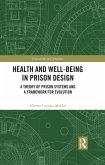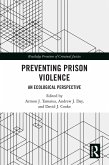The promotion of health and well-being of people in prison is vital to enable rehabilitation. Traditional prison architecture severely weakens both rehabilitation efforts and opportunities for desistance. Only a handful of prison systems in the world have shown significant changes in their prison designs. Underpinned by Critical Realism and the PERMA theory of well-being, this book reveals significant new insights to inform prison design. The author presents international case study research with interviews with prison authorities and designers from four countries and the three different prison models, as well as key international United Nations advisors. For the first time the visions of prison designers are contrasted with those of prison authorities, bringing a new synthesised understanding of the differences and similarities in their approach to the health and well-being of both inmates and staff from which to generate a new framework for design considerations.
This book illuminates new directions for prison design and is essential reading for policymakers, academics, and students involved in the study and development of criminology, corrections, and penology. It is also an indispensable source of up-to-date knowledge for prison authorities, public health officials, architects, and designers involved in the design of prisons and any other type of coercive detention facilities.
Dieser Download kann aus rechtlichen Gründen nur mit Rechnungsadresse in A, B, BG, CY, CZ, D, DK, EW, E, FIN, F, GR, HR, H, IRL, I, LT, L, LR, M, NL, PL, P, R, S, SLO, SK ausgeliefert werden.









